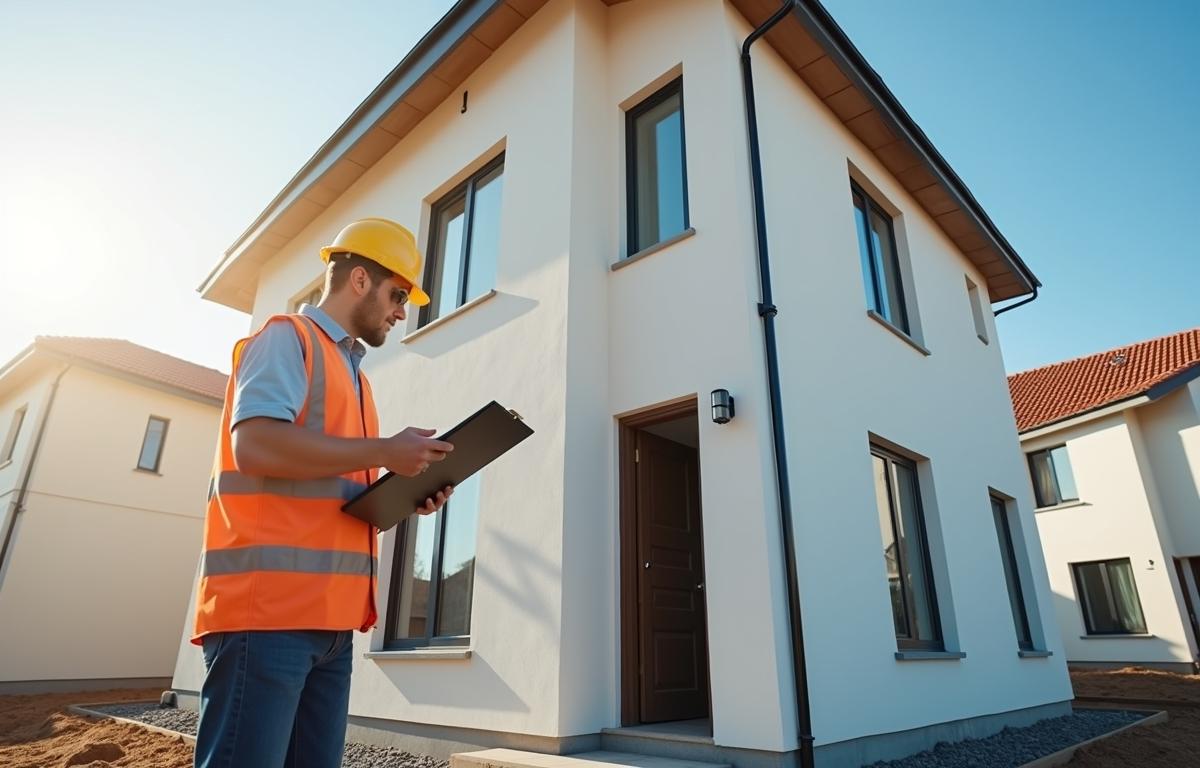Evaluating new construction homes can be challenging when you’re excited about moving in. It’s easy to be dazzled by modern fixtures, gleaming floors, and that just-painted smell. Beneath the surface, though, lie the elements that truly count, whether it’s the foundation, the materials used, or the level of skill invested in the build. A solid grasp of these details can make all the difference between a durable, long-lasting dwelling and one that might cause regrets later.
It’s worth taking a careful look at the property before closing any deals. Rushing in might overlook important factors, such as the quality of the structure, potential shortcuts taken by the builder, or even simple finishing touches that can indicate underlying issues. Digging deeper and checking essential parts of the home will help ensure your investment stands strong for years to come. If you’re eager to explore more real estate tips, there are plenty of resources available to guide you further.
Key Indicators of Quality in New Construction
Examining intrinsic aspects of the dwelling should always be the first step. Lots of buyers look at cosmetic details, yet it’s crucial to focus on the bones of the household. A house can appear flawless on the surface but still have hidden flaws. Checking for signs of meticulous workmanship and proper structural design is a must.
Look out for straight lines in the walls and ceilings warping is often a red flag. Doors and windows should open and close without effort. Gaps along the edges can mean frames are not installed squarely, while squeaky, uneven floors could point to subpar structural support beneath the surface.
Foundation Inspection
A strong foundation is vital for any home’s long-term stability. If the home’s base is compromised, problems like cracks, water intrusion, and sagging floors might appear down the road. Stroll around the exterior to see if there are visible cracks or uneven spots along the foundation walls. Hairline cracks might not always signal disaster, but wider cracks can be a cause for concern.
Inside, keep an eye out for sloping floors or walls that seem to tilt. Such telltale signs often mean there’s more going on underneath. If something feels off, an inspection by a specialist can confirm whether the foundation is custom-built to withstand the local environment.
Examining Materials and Finishes
The materials used play a big role in a home’s value. High-grade wood, robust masonry, and top-notch insulation not only boost durability but also enhance energy efficiency. You’ll want to see consistency in the materials from the framework to the siding. Inconsistencies can mean the builder skimped on certain areas or substituted inferior options to cut costs.
Finishes matter just as much. Fixtures such as faucets, door handles, and cabinet hardware can offer a glimpse into how much care was devoted to the project. If the builder invested in quality components, it’s a good sign they took the entire process seriously. For more detailed interior design insights, checking any local showrooms can help you compare options and evaluate standards.
The Flooring Factor
Flooring is both a functional and aesthetic element. Hardwood floors should feel stable underfoot, with boards fitted snugly and no large gaps in between. Tile floors should be level, with evenly spaced grout lines. If you notice random dips or raised sections, that could mean a rushed installation. Quality flooring not only looks appealing but also stands up better to foot traffic, spills, and regular wear.
Evaluating Workmanship
Workmanship is the cornerstone of a successful build. Even if top-quality materials are used, poor assembly can lead to recurring headaches. Visible signs of lax workmanship include crooked countertops, poorly aligned lighting fixtures, and sloppy paint around trim. Accepting these flaws might result in frequent touch-ups or future renovations.
Speak openly with the builder or sales representative about their crew’s construction methods. Builders who take pride in their process often share details on every phase of construction. They might mention techniques that reduce moisture infiltration or highlight the use of advanced tools designed to improve accuracy. When they’re forthright about their system, it’s typically an indication of genuine care for the outcome.
Checking the Walls and Paint
Walls should be uniformly smooth and properly sealed. A careful paint job implies the contractor took time to prep and prime the surfaces. Look for spots where paint is noticeably thinner or has bubbles forming beneath it. Sometimes these flaws point toward a looming moisture problem, which no homeowner wants to tackle after move-in day. A precise, even paint finish can speak volumes about the overall approach.
Importance of Building Codes
Complying with local building codes isn’t merely a bureaucratic formality. It’s a safeguard to ensure the home’s essential components are assembled according to proven, reliable standards. Building officials monitor areas like electrical wiring, plumbing, and mechanical systems to confirm they’ve been installed properly.
Homes that meet or exceed code requirements can stand the test of time and give you peace of mind. If you’re weighing property investments, it’s wise to request documentation or certificates that show the house passed all inspections. If the builder balks at providing this, you have good reason to question their work ethic.
Why Electrical and Plumbing Systems Matter
Nothing disrupts household life more than persistent electrical or plumbing troubles. Flickering lights, regular breaker trips, or slow drains may be more than minor annoyances. They sometimes indicate substandard materials or improperly installed pipes and wires. A brand-new home should, at minimum, provide modern systems free from quick-fix issues. If you notice too many hiccups early on, it might hint at bigger problems below the surface.
Checking the Home’s Layout and Design
The best new homes balance function with beauty. A smart layout ensures daily life flows smoothly, without cramped corridors or oddly positioned rooms. If your main living space intersects awkwardly with the dining or kitchen areas, it may feel inconvenient over time. A well-designed floor plan amplifies your comfort, allowing you to enjoy each space without feeling hemmed in.
Ample storage and thoughtful use of space are also big indicators of good planning. Cabinets and closets should be placed in logical spots, with enough room for daily necessities. Even small details like the position of light switches and electrical outlets matter, as they help streamline your routine. Should you want home improvement suggestions down the road, features like open space near structural walls can accommodate expansions or remodeling more easily.
Ventilation and Natural Light
Keep in mind that proper airflow and plenty of natural light help keep a home fresh and cheerful. Rooms should have windows that fill the space with light, and vents or ducts should be placed strategically. If some corners feel stuffy, the ventilation design might be off. Good air quality and balanced humidity levels protect both you and the building materials from potential moisture issues.
Assessing the Builder’s Reputation
The name behind the build can often speak volumes. Reputable builders prioritize high standards, communicate openly, and address concerns promptly. Look at customer reviews, and see if any negative patterns emerge. Are there repeated complaints about delayed deadlines or ignored repair requests? Those problems may signal a builder who cuts corners.
Don’t shy away from asking the builder the tough questions. How long have they been in the industry, and do they have references you can contact? Even better, if they have completed similar projects in the same neighborhood, take a stroll around and speak with current homeowners. Their stories will reveal how responsive the builder is when problems arise and whether promises made during the sales process translated into results.
Warranties and After-Sales Support
Many builders provide warranties to guarantee parts of the home for a specific period. While a lengthy warranty may catch your eye, pay attention to what it actually covers. Does it handle structural elements, or just cosmetic issues? A clear, concise warranty usually suggests the builder is confident in the lasting quality of their craftsmanship. After-sales support is just as significant if a warranty claim takes months to process, the duration doesn’t matter much. You want swift service that addresses problems in a timely manner.
Paying attention to each of these factors will help you evaluate the property far beyond its initial sparkle. If any red flags pop up, they might be worth negotiating over or even walking away from. After all, a new home should enhance your lifestyle and serve as a secure investment. By staying alert to the deeper layers of construction, you’ll feel far more content with your decision and better prepared for whatever lies ahead.





Leave a Reply
You must be logged in to post a comment.